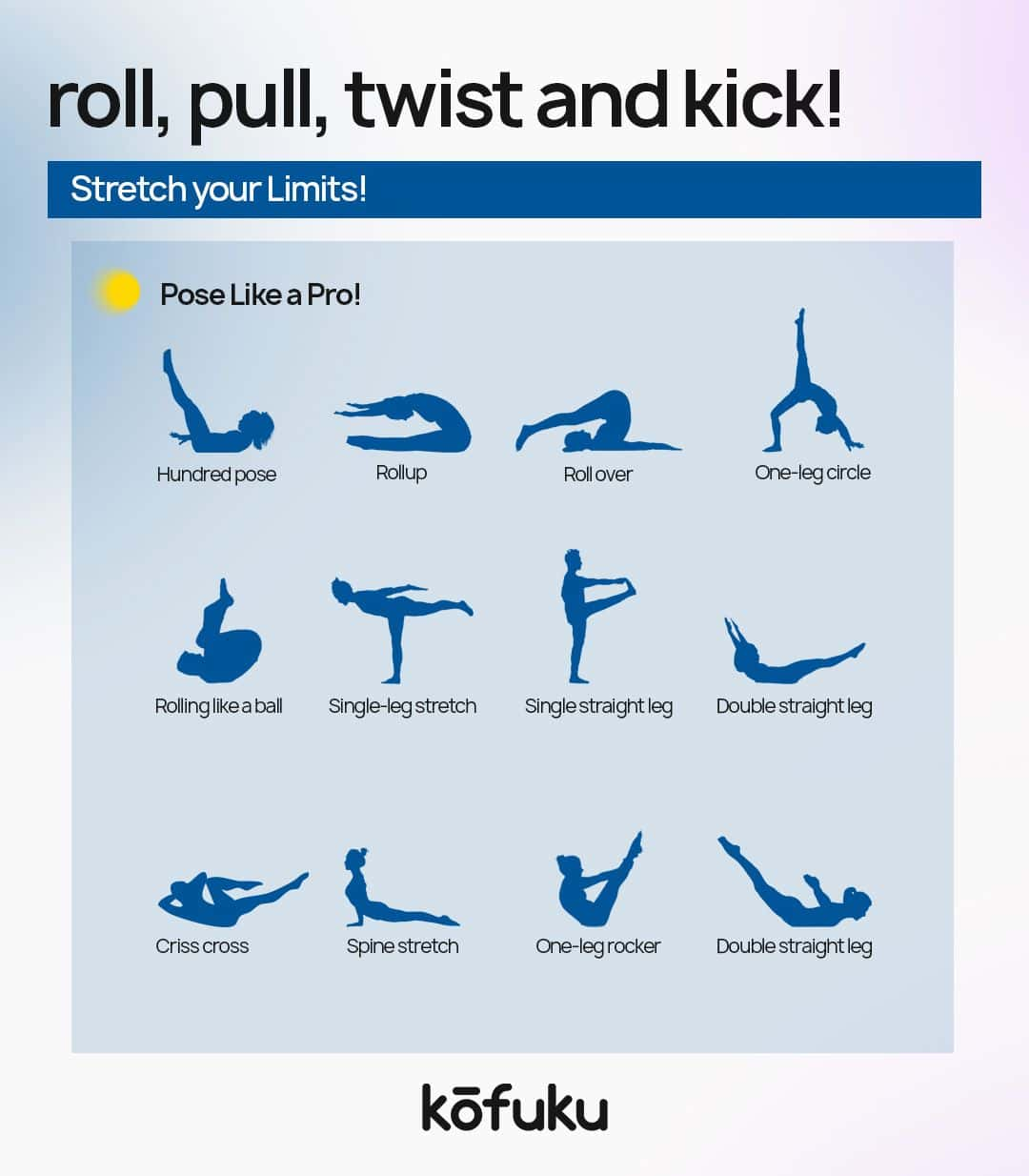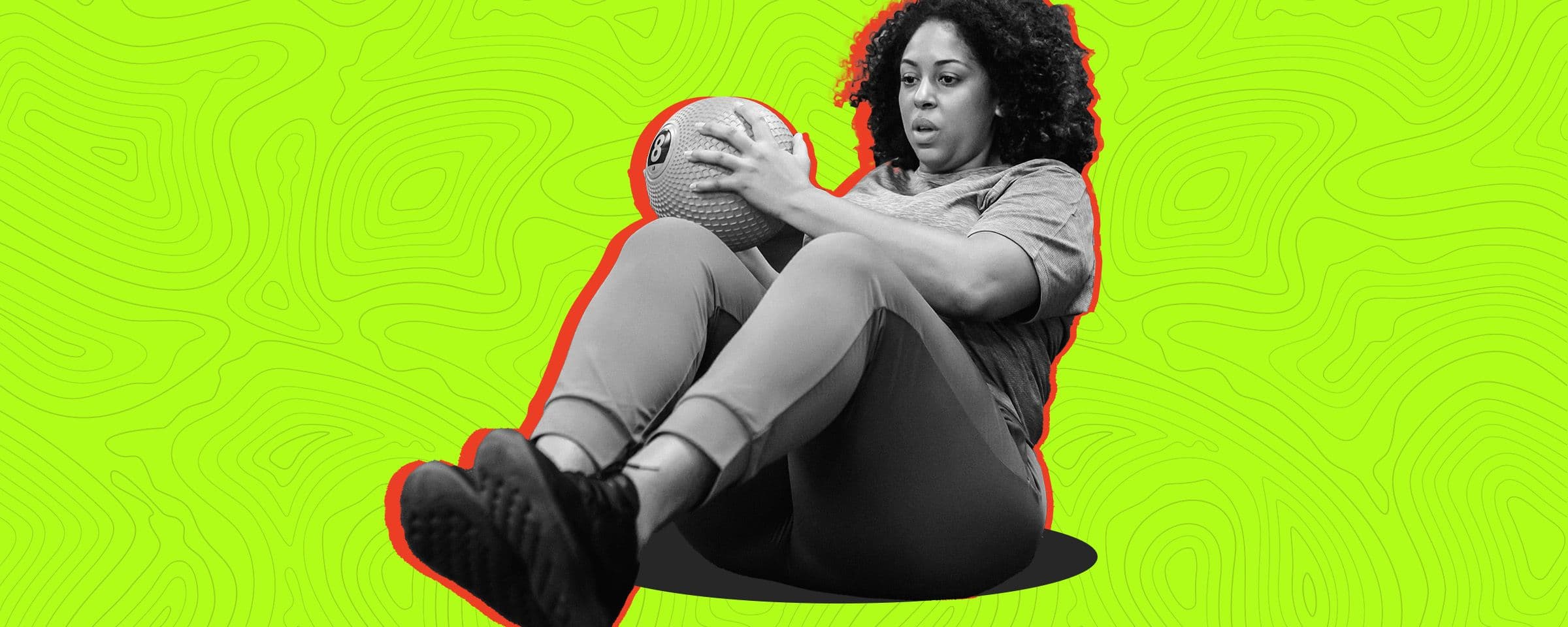Everything to Know About Pilates: Overview, Pros and Cons, Benefits

Introduction
If you’ve been on the market for a new workout routine, which can give you a healthy balance of flexibility, strength, muscle tone and help for those niggling aches and pains, pilates just might be the answer.
Pilates is a low-impact exercise that relies on precise movements to strengthen and stretch the muscles. It is quite a holistic system, focusing on core muscles, balance and posture.
Don’t get intimidated by what you see - it’s much easier to get into, and depending on your decision, it’s also not that expensive.
Pilates has been around for nearly a century, yet it keeps gaining traction, finding new fans constantly. It’s become a super popular mode of exercise, which is customisable to fit you and your health goals, regardless of sex, age, health status and fitness levels.
Practising Pilates has many potential health benefits, including increased flexibility, muscle tone and strength.
What is Pilates?
Pilates refers to a form of exercise and body conditioning developed by Joseph Pilates back in the early 20th century, mainly as a way for dancers to recover from injuries. Dancing is a gruelling, repetitive motion that constantly stresses the same muscle groups.
Dancers are quite vulnerable to repetitive motion injuries, which happen to all of us occasionally. Pilates can benefit a wide range of people, including those who haven’t been injured.
We are people, i.e. creatures of habit, that walk a certain way, run up the stairs a certain way, stand a certain way and sit at our desks a certain way. Our muscles get imbalanced because of overuse. Pilates helps to counteract that.
Some guiding principles include concentration on each movement, using the abdomen and lower back muscles, flowing precise movements and controlled breathing. Depending on the exercise, routines may be performed on bed-like structures or a mat or blanket.
Pilates is a type of strength training. However, it doesn’t look like some other strength training exercises you might know. It focuses on improving muscle tone, not building muscle, yet the result is the same - better stability and endurance.
While Pilates won’t bulk you up, it is designed to make you look longer and leaner. Moreover, it can reduce the likelihood of you getting injured.
What Are the Benefits of Pilates?
Pain Relief
The benefits of Pilates may be therapeutic and preventive. Doing the exercises may prevent you from getting injured, help with a present injury or manage a chronic musculoskeletal issue. It could also help you establish a healthy baseline so when injuries do occur, you can bounce back sooner.
It is excellent for lower back pain because, besides tight muscles, lower back pain can happen because of misalignment and lack of core strength. Proper alignment ensures your gait is sturdier and straighter, making it easier to exercise and prevent mishaps.
Core Strength
Everyone wants a stronger core, but no one wants to work for it. One reason why Pilates is such a great workout is because it focuses on building core strength. The core includes the stomach area, the sides, mid to lower back, buttocks and hips.
Pilates engages all these muscles simultaneously, which means you walk away with a stronger core and the benefits of it as well.
Posture
If you naturally have a strong, aligned core, your posture will improve as well, a small but significant change that can make a difference in your everyday life. When you sit slumped on a chair, you are putting undue pressure on your lower back.
Hunching is also bad for breathing and digestion. Pilates makes sure you sit straight on your chair, don’t hunch, and maintain proper posture.
Flexibility
Flexibility is very important in everyday life. The more limber you are, the more you can carry out essential functions. In Pilates, there is a lot of stretching improving your flexibility. It expands the range of activities that you can do.
Flexibility prevents injuries, helps muscles relax, and ensures you retain mobility and range of motion as your age progresses.
Balance and Coordination
Suppose you are weak and out of alignment. In that case, finding your centre of gravity becomes tough, something that makes you more injury-prone, especially if you try to perform multiple movements at once.
By making sure you have a strong core, Pilates might help you find your balance - and maintain it. As balance and coordination improve, your result is balanced movement and a reduced risk of falls.
Body Awareness
Just like meditation and yoga, focusing on your body and breathing is important in Pilates. This awareness helps you understand your body better - like which muscles are most potent, how they compensate for weak muscles elsewhere, where you store tension and what makes you feel the best way possible.
Breath Control
Just like yoga and other mindfulness practices, Pilates is also about breathing. You have to be aware of and control your breathing to exercise more appropriately. You can handle difficult situations and emotions better if you control your breathing, just as they say in Pilates.
While that rounds up the pros of Pilates, this type of exercise also has many cons. Just because they aren’t outlined everywhere doesn’t mean they don’t exist. Given below are some of the cons of doing Pilates.

What are the Cons of Pilates?
While Pilates gets a lot of praise for its benefits, you should be aware of a few potential drawbacks or challenges.
Injury Risk
Pilates depends on precise movements, and if done incorrectly, it can lead to strain or injury, especially in the lower back, joints, or neck. Proper technique and instruction are required to minimise this risk.
Proper Equipment
Certain Pilates classes depend on specialised equipment like chairs or reformers. These might be expensive, and not all gyms have access to them.
Limited Cardiovascular Intensity
While Pilates is great for flexibility, strength and muscle tone, it doesn’t give you an intense cardiovascular workout compared to running or cycling. If you want to boost your heart rate significantly, Pilates alone isn’t enough.
Not a Quick Fix
Pilates is great for long-term benefits like better posture, core strength and flexibility. However, it is not your ticket to rapid muscle growth or fat loss. Results take their time and consistency.
Not Suitable For All Fitness Levels
Specific Pilates exercises can be challenging, especially if you are a beginner or have limited mobility. Developing the strength and flexibility required to carry out certain moves might take time.
Not Good for High-Impact Training
If you are looking for high-intensity or sports-specific training, Pilates is not for you. It is more about controlled, low-impact movements.
No Instructors
The quality of instruction in Pilates can vary, and not all instructors are skilled or knowledgeable. Without proper guidance, you may not be able to get the best out of your sessions.

Conclusion
In conclusion, Pilates is a great way to exercise if you want to get in shape, but over a long period of time. It definitely isn’t a quick fix and won’t get you results in two to three weeks. You have to be at it for months for something to happen. Pilates is a great way to get in shape, stay in shape, and work on your strength, especially for your lower body.
FAQs
What is Pilates?
Pilates is a form of exercise and body conditioning that Joseph Pilates developed in the early 20th century, created so that dancers can recover from injuries.
I do regular strength training. Is Pilates for me?
You can do regular Pilates side-by-side strength training because it increases the strength and flexibility of your lower body.
Is Pilates a great way to lose weight?
According to studies, people who are trying to lose weight can benefit from Pilates. It lowers body mass index, body weight and body fat percentage in overweight or obese people.
Do I need special equipment for Pilates?
Not necessarily. There are two main types of Pilates: mat Pilates and equipment-based Pilates. Mat Pilates requires just a mat, while equipment-based Pilates uses tools like the reformer, Cadillac, or Pilates chair.
Can Pilates help with back pain?
Pilates is known to help alleviate chronic back pain by strengthening the core muscles, improving posture, and increasing flexibility. Many people find relief from back pain through regular Pilates practice.





